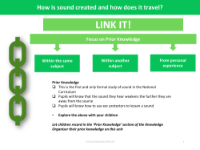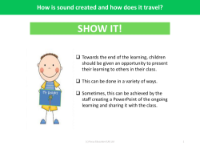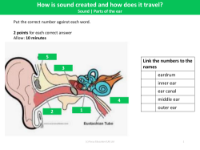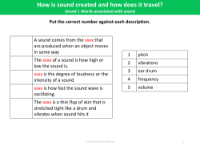Knowledge organiser - Sound - Year 4

Science Resource Description
The Year 4 knowledge organiser for the topic of Sound is a comprehensive guide that introduces key vocabulary and concepts essential to understanding how sound works. One of the primary terms is 'pitch', which describes the highness or lowness of a sound; high sounds have a high pitch, whereas low sounds have a low pitch. Another important term is 'volume', which refers to how loud or soft we perceive a sound to be, based on the intensity of the sound wave—the greater the intensity, the louder the sound.
The concept of 'vibrating' is central to the creation of sound, which occurs when a medium, typically air, vibrates and generates sound waves. 'Frequency' is a measure of how many cycles of these waves occur in a single second. The organiser also explains the role of the 'hammer', one of the small bones within the ear, also known as ossicles, which includes the malleus, incus, and stapes. These bones amplify sounds, making them louder as they are transmitted to the inner ear. Key knowledge points cover the process of hearing, the creation and propagation of sound, the connection between sound and vibration, and the relationship between pitch, volume, and the characteristics of the vibrations that produce a sound. This organiser sets the stage for Year 4 students to delve into the science of sound, building upon what they have previously learned.












